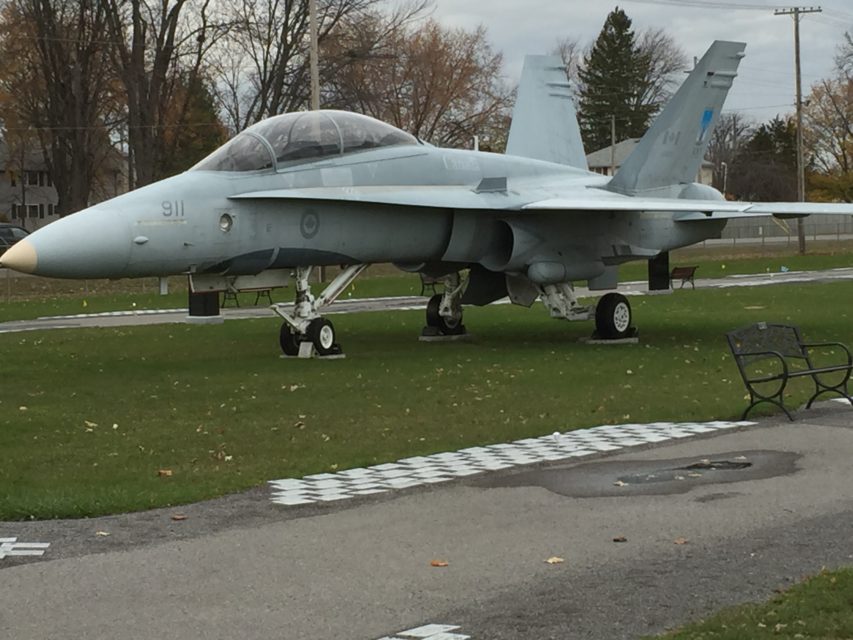My initial reaction on seeing Alex McColl’s headline was to immediately reject the notion of the Royal Canadian Air Force operating two completely different fighter aircraft, both for cost and for personnel reasons: the RCAF is already underfunded and short on trained aircraft technicians for a single fighter (the CF-18 Hornet), never mind two even higher-tech replacements. But on reading the article, I’m open to further investigation of the idea:

“F-35 Lightning II completes Edwards testing” by MultiplyLeadership is licensed under CC BY 2.0
Canada’s new Prime Minister Mark Carney didn’t waste any time standing up to Donald Trump’s illegal trade war. Within hours of being sworn in, Bill Blair — who was minister of national defence under Justin Trudeau and remains in the role under Carney — went on CBC’s Power & Politics to deliver a bombshell: Canada is going to re-examine our plan to purchase 88 American F-35A fighter jets.
This was in response to a question about if Canada would emulate Portugal, which announced that it was reconsidering a planned purchase of American F-35 jets: “We are also examining other alternatives, whether we need all of those fighter jets to be F-35s or if there might be alternatives. The prime minister has asked me to go and examine those things and have discussions with other sources particularly where there may be opportunities to assemble those fighter jets in Canada, to properly support them and maintain them in Canada, and again we’re looking at how do we make investments in defence which also benefits Canadian workers, Canadian industry and supports a strong Canadian economy.”
When asked about a partial cut to the F-35 order, Blair responded: “The direction I’ve been given by the prime minister is go and look at all of our options to make sure that we make the right decision for Canada.” He noted that this didn’t mean the government planned to outright cancel the F-35 contract.
[…]
With the first 16 F-35s already on order, and the first four already in production on the assembly line in Texas, it’s likely too late to cancel the F-35 order without significant penalties.
Saab JAS-39 Gripen of the Czech Air Force taking off from AFB Čáslav.
Photo by Milan Nykodym via Wikimedia Commons.This opens the door to a mixed fleet that includes a smaller number of expensive F-35A fighter-bombers and a larger number of affordable Gripen-E fighters. All of Canada’s G7 allies fly a mixed fleet of fighter jets today, some have 3 or more types. While it wouldn’t be easy, it is possible for a serious nation to fly a mixed fleet. Before the CF-18, Canada had 3 different types of armed fighter jets in service. The RCAF wanted to replace them all with expensive F-15 Eagles, but Pierre Trudeau made them settle for the cheaper F/A-18 Hornet. His government ordered 138 CF-18s, but that fleet shrank over time as a cost saving measure. The big cut happened during the CF-18 modernization under the Harper Government, when the hornet fleet shrank from 120 to 80 jets.
Living up to our commitments to our NATO allies is about more than just spending 2 percent of GDP, it also means living up to our mission requirements. Keeping our word means showing up, and 88 F-35As was never going to be enough jets for us to meet our commitments to NORAD and NATO at the same time. To do that, we need at least 120 jets. Reevaluating our options does not mean starting from scratch. To paraphrase minister Blair: A great deal of work was done during the FFCP evaluation. Two jets met the requirements: the expensive American F-35, and the Swedish Gripen-E with an offer to make them in Canada. Let’s just buy them both.
The first step is easy: Have Saab and IMP refresh their FFCP submission with new delivery deadlines and place an order for 88 Gripen-E jets. The second is to announce that we’re reducing the F-35 order down to 65 jets – the number that the Harper government planned to sole source but never ordered. Finally, we put our elbows up and announce that the F-35 order would be cut by 5 jets for every week the Trump administration maintains their threats of illegal tariffs, down to a minimum of 40 jets.
The F-35A has a total cost of ownership about double that of the Gripen-E, so we could afford to add two Gripens for every F-35 cancelled. A mixed fleet of about 120 Gripen-Es and 45 F-35As would help us get to 2% of GDP while reliably pulling our weight on NORAD and NATO missions.








